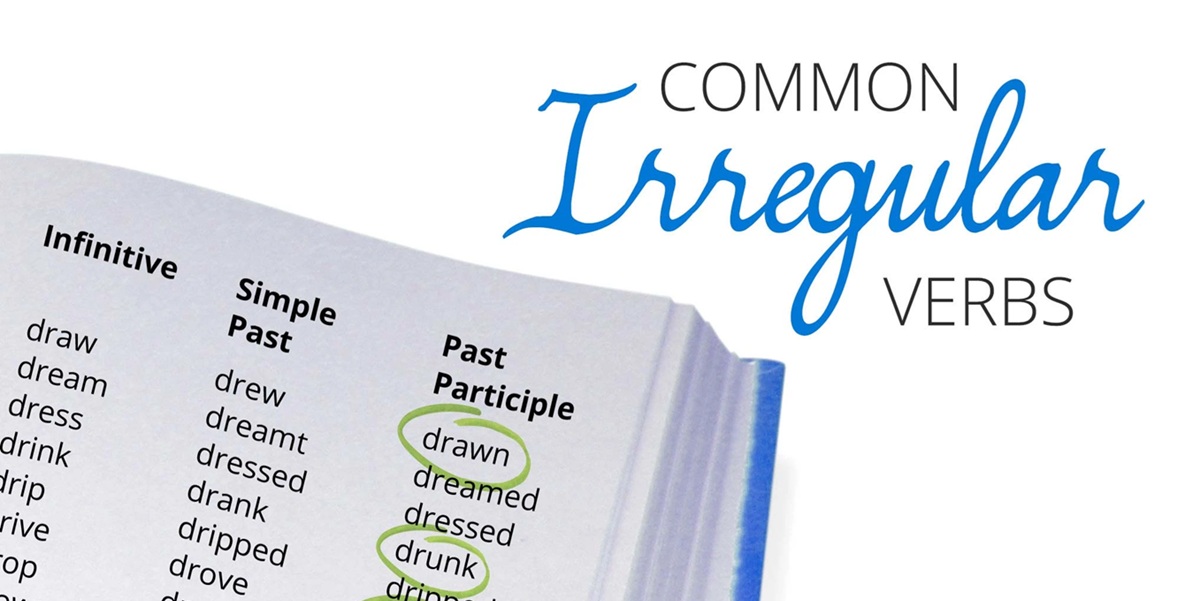To learn English grammar effectively, children need to apply the right methods, such as systematic learning, regular practice, and learning through real-life examples. Therefore, this article shares several strategies to help children absorb grammar naturally, remember it easily, and apply it accurately in both speaking and writing.
Learning English Grammar Systematically
Learning English grammar systematically, especially for beginners, means that children are introduced to grammar concepts in a logical sequence, from basic to advanced. This structured approach makes it easier for them to absorb and retain knowledge long-term. When grammar points are organized scientifically, children can understand the relationships between them and apply them in real-life situations, rather than learning in a scattered or fragmented way.
Example of a systematic grammar learning path for children:
-
Basic sentence components: Subject – Verb – Object. Example: I eat apples.
-
Simple Present Tense: How to conjugate verbs and add “-s/-es” for third person singular. Example: She plays piano.
-
Present Continuous Tense: Use “am/is/are + V-ing” to describe ongoing actions. Example: He is reading a book.
-
Simple Past Tense: How to use past tense verb forms. Example: They visited the park yesterday.
-
Questions and Negatives: Use of auxiliary verbs “do/does/did” in questions and negative sentences. Example: Do you like milk?
Learning in a systematic way not only helps children review more effectively but also builds a strong foundation for understanding more complex structures later on, such as conditionals, passive voice, or relative clauses.

The Most Effective Way to Learn English Grammar Is Regular Practice
To remember English grammar in the long term, children need to practice regularly instead of just learning theory. Applying grammar immediately in speaking, writing, and doing exercises helps turn knowledge into natural reflexes.
Examples:
-
Write sentences daily: After learning There is/There are, write 5 sentences about the bedroom. Example: There is a bed in my room.
-
Practice speaking in context: Learn the present continuous tense by describing ongoing actions. Example: I am drawing a picture.
-
Do short exercises: 5 - 10 multiple-choice questions a day to review.
-
Play grammar games: “Grammar Bingo” or “Sentence Building Cards” to make learning fun and interactive.
Consistent practice helps children use grammar correctly, naturally, and more flexibly in communication.
Learn English Grammar Effectively Through Examples
Learning through examples helps children understand how to use grammar more quickly and remember it longer than just memorizing dry rules. When they see grammar structures used in real sentences, it becomes easier for them to visualize and apply.
For example, with the structure “be going to + V” (used to talk about future intentions), you can guide your child to say a sentence like:
“I’m going to visit my grandma tomorrow.”
Or with the structure “because + clause” (used to show cause/reason), a child might say:
“She is crying because she lost her toy.”

Integrate All Language Skills Together
Combining listening, speaking, reading, and writing while learning grammar helps children understand and apply knowledge more flexibly. When multiple skills are practiced at the same time, children develop natural reflexes instead of only focusing on theory exercises.
Examples:
-
Listening + Speaking: Listen to a conversation, note down sentences in the present simple tense, then practice saying them. Example: I go to school at 7 a.m.
-
Reading + Writing: Read a short story, underline sentences using a new structure, then write a short paragraph using that structure. Example: Learn There is/There are → write 5 sentences to describe your room.
-
Listening + Writing: Listen to a short news clip or dialogue and write down the main sentences. Example: She is studying English now.
-
Speaking + Writing: Retell a past event and write it into a paragraph using the past simple tense. Example: We visited the zoo last Sunday.
Practicing grammar through all four skills helps children retain it better and improves overall communication abilities.
Use a Variety of Learning Materials
Using different types of materials helps children approach English grammar from many angles, preventing boredom from relying on just one source. A varied approach also enhances memory retention.
Children learn better when exposed to sources such as:
-
Grammar workbooks by level
-
English comic books
-
Animated videos and English songs
-
English learning apps for kids

Identify and Correct Mistakes to Learn Grammar Effectively
Recognizing and correcting mistakes helps children avoid repeating the same errors and gain a deeper understanding of grammar usage. Instead of only learning the correct structure, children should understand why the mistake happened and how to fix it in order to improve more effectively.
Example:
-
Incorrect: He go to school.
-
Correct: He goes to school.
Parents or teachers can ask, “Can you find what’s wrong with this sentence?” to encourage children to think critically, rather than simply correcting it for them.
Be Consistent and Practice Every Day
English grammar cannot be mastered overnight. Children need to practice consistently—just 15 to 30 minutes a day. A regular study habit helps build long-term knowledge, steady progress, and greater confidence in using English.
Example study plan:
-
Today: Review the present simple tense
-
Tomorrow: Learn prepositions of place
Studying a little each day helps the brain retain information longer and avoids the stress of last-minute cramming.

Effective Way to Learn English Grammar Through Short Stories
Children can learn grammar effectively by reading and analyzing short stories. Grammar in stories is often relatable, vivid, and easy to understand, helping children see how sentence structures are used in real-life contexts.
Example:
-
When reading The Very Hungry Caterpillar, children may come across sentences in the past simple tense such as “He ate through one apple.”
-
Parents can point out and explain the grammar structure while reading together.
|
Learn English Grammar Effectively Through Short Stories with Monkey Stories Grammar learning becomes engaging and enjoyable when children explore over 1,000 vivid English stories in Monkey Stories. Each story is carefully designed with correct grammar, from simple to complex sentence structures, allowing children to improve both reading comprehension and grammar naturally - without the need to memorize rules. The app also features native-speaker audio, attractive illustrations, and an interactive reading mode that lets children listen, read, and repeat sentences. This helps reinforce grammar structures in a fun and effortless way. By interacting with real-life contexts in the stories, children naturally strengthen their understanding and can apply grammar fluently in speaking and writing. Register for Monkey Stories today and let your child try it for free - turn every story into a fun and memorable grammar lesson. |
Learning Grammar Through Movies
Watching English movies or videos with subtitles helps children enjoy learning while improving their grammar. Natural dialogues expose children to how native speakers use sentence structures, which aids long-term retention compared to purely theoretical learning.
Example: In the movie Finding Nemo, when Dory says “I can speak whale,” children learn the structure “can + verb.”
Using bilingual subtitles can help them better follow the content and connect grammar to real language use.
Learning Grammar Through Games
Learning English grammar through games allows children to absorb knowledge naturally, without the pressure of traditional textbooks. Games create an interactive environment where kids can practice sentence structure, word types, and verb tenses in a fun and stress-free way. When children engage in challenges or earn rewards, grammar learning becomes exciting and builds long-term motivation.
Some effective grammar games for kids include:
-
Grammar Bingo: Children listen to a sentence or prompt and mark the correct structure on their Bingo board.
-
Sentence Building Cards: Children arrange word cards to form complete sentences based on learned structures.
-
Verb Tense Race: Group competition to quickly fill in the correct verb tense in a sentence.
-
Grammar Board Game: Move game pieces and answer grammar questions to progress toward the finish line.
-
Online Quizzes: Answer multiple-choice grammar questions using learning apps such as Monkey Junior, Kahoot, or Quizizz.
Example: When learning the present simple tense, a game like Verb Tense Race might ask children to complete the sentence:
-
“She ___ (go) to school every day.”
-
The correct answer is “goes.”
Answering quickly and correctly helps reinforce verb conjugation effectively.
Develop English Grammar and the Four Language Skills with Monkey Junior
Monkey Junior is a leading English learning app designed for children aged 0 to 11. Trusted by over 15 million parents across 108 countries, the app has received numerous international awards, including the GIST Award, ASEAN ICT Gold, KidSAFE Certified, and Mom’s Choice Award.
More than just building listening, speaking, reading, and writing skills, Monkey Junior focuses on developing a solid grammar foundation through a well-structured learning pathway and highly interactive methods.
Key features that make Monkey Junior effective for grammar and English learning:
-
A systematic curriculum aligned with the Cambridge framework, offering over 4,000 interactive lessons. These cover everything from basic vocabulary to advanced grammar topics like tenses, conditional sentences, passive voice, and more, customized to each age level.
-
A multisensory and game-based learning approach that combines listening, seeing, reading, speaking, and interactive touch, helping children remember grammar longer and use it naturally.
-
Integrated AI tools such as M‑Speak and M‑Write support accurate pronunciation and correct grammar usage at the word and sentence level, especially useful for practicing specific grammar structures like “responsible for,” “famous for,” and others.
-
Detailed learning reports allow parents to track their child’s progress, identify strengths and areas for improvement, and adjust the learning approach accordingly.

Register now for a 7-day free trial and help your child master grammar and build complete English skills with Monkey Junior.
Tips for Teaching English Grammar to Children
When teaching grammar to children, parents and teachers should keep in mind the following to ensure more effective learning:
-
Start with basic grammar points such as the present simple, past simple, affirmative – negative – interrogative sentences.
-
Link grammar with real-life situations to help children understand and remember better.
-
Avoid overwhelming them with too much at once; give time for proper absorption.
-
Use visual and interactive methods such as images, videos, and games.
-
Encourage children to identify and correct their own mistakes for better retention.
-
Integrate grammar with all four language skills: listening, speaking, reading, and writing.
-
Be patient and provide motivation to keep children interested in learning.
FAQ – Frequently Asked Questions
Is grammar necessary for beginners?
Yes. Grammar helps children form correct sentences and understand English structure early on, which supports both speaking and writing.
At what age should children start learning grammar?
Children can start as early as 4–5 years old with simple structures, and gradually move to more advanced ones based on their ability.
Should grammar be taught before vocabulary?
No. Vocabulary should be learned alongside grammar so that children have both the words and the tools to form sentences.
How often should a new grammar structure be introduced?
It depends on the child’s age and learning capacity. Typically, a new structure should be introduced only after the previous one is well understood and applied.
Is learning grammar through games effective?
Yes. Games make grammar learning natural, fun, and help children retain concepts longer.
Conclusion
We hope these practical suggestions for learning English grammar will help parents support their children in mastering sentence structures and applying grammar confidently. This solid foundation will also contribute to the development of communication, writing, and language thinking skills in a natural and sustainable way.




.png)



.jpg)
